After visiting Krakow for 3 days, we wanted to head on to Budapest without skipping out on good ol’ Slovakia. Thanks to the platform: Daytrip, we were able to do exactly that! (Orava Castle)
Jan, our driver and local guide from Daytrip, picked us up from our AirBnB place in Krakow — and right then and there, we knew that we were going to have a great time on this road trip because he was not only friendly but also very knowledgeable about the region! Plus, the way he beautifully described Slovakia just made me look forward to it even more.
Our first destination: Oravský Podzámok (translated somewhat as “village under the castle”) in order to see one of the so-called ‘most beautiful castles in Slovakia’, the Orava Castle (Oravsky Hrad).
As we cruised along the roads of Hungary that lead to the south, we started to see bits and pieces of snowscape… But once we set foot in Slovakia an hour later, my silent wish of seeing full-blown breathtaking white landscapes was granted!
Slovakia
I was simply in awe of the terrain that surrounded us while our car breezed by.
Apparently, heavy snowfall happened in Slovakia the night before; so Jan told us that the Orava Castle and the town itself would surely be looking magnificent… and well guys, he was absolutely right about that!
Orava Castle
This wonderfully-preserved castle towers over the village of Oravský Podzámok at 112 meters high as it sits on a high rock above the Orava River in the region of North Orava.
Looking at its facade, one would instantly say that it’s a beauty— there’s no doubt about that. But one can’t also deny the tinge of mystique that surrounds it… which the crew of the 1922 classic vampire film “Nosferatu“ had perfectly detected.
TRIVIA: Yes guys! Orava Castle once doubled as Count Orlok’s Transylvanian castle and a lot of the scenes in that movie were filmed here. (Some scenes also showed the High Tatra Mountains and the Vah River in Slovakia).
That aside, Orava Castle is currently one of Slovakia’s foremost national monuments and the 2nd-most popular museum in the country. Before I bombard you with beautiful photos, let me give you a brief explanation of the parts of this castle.
» Exhibitions in Orava Castle
- Historical: the whole of the castle is considered a historical complex given how it exhibits different architectural styles from differing historical periods. The things that we’ve seen have focused on medieval housing, military technology, interior design, and fine arts.
- Natural History: located in the middle of the castle, we saw the various fauna and flora that one would normally see in the Rohace Mountains, which is one of the most magnificent parts of the Western Tatras mountain range.
- Ethnographic: a level higher was where we could see various paraphernalia that exhibits the historical culture, society, and people in Orava.
- Archaeological: in the highest and oldest section of Orava Castle is where we found the Citadel. This area displays expositions of the oldest settlements and history of Orava.
Today, the castle can only be visited with a guide and to give you an idea of how it went for us and how everything was, I’ll let the photos below do the talking.
The narrow tunnel (upper left of the photo above) was a good defense of the castle as soldiers poured boiling oil on enemies from certain holes in the ceiling.
If you’re up for the challenge, you can take the stairs that has approximately 600 steps which will lead you to the highest point of the castle tower! This affair is well worth it because it will give you a spectacular view of the village, as well as the High Tatra Mountains in the distance (as seen in the photo below).
» History
For the history buffs like I do, here’s a simplified timeline which will give you an idea of Orava Castle’s past.
1267: The first written record of this castle was found during this year; however, it is assumed that it has been already founded in the 1st half of the 13th century. Like most Slovak castles though, Orava Castle was built in place of a former fortified fortress.
1370: It became the center of Árva county of the Hungarian Kingdom given how it was seen as a strategic trade route point between Poland and Hungary. With that in mind, it also functioned as an important protection for long-distance merchants that are en route to Poland.
Late 13th century and onwards: Various constructions and further fortifications were made, and the castle was built in several stages, later on forming 3 separate parts that are erected on different levels of the rocky hill: Lower, Middle, and Upper levels.
Late 15th century: After the death of the former head of the county, John of Dubovec, his heirs began to quarrel over the inheritance — and the situation was so bad that the castle became a storehouse. Eventually, it was paid for by a mine-owner named Ference Thurzo who was regarded as a wealthy noble. Upon his acquisition, he and the rest of the Turzo family members (like his son György) made further modifications and fortifications to Orava Castle in which they put up defensive, administrative and residential buildings representing different building styles like Romanesque, Gothic, Renaissance, Baroque and Romanticism. This had overall made Orava Castle into the beauty that it is today.
After the death of György, it was passed on to his daughters who entrusted it to an elected administrator. Regrettably, because of the changes in the economy and the society, the castle slowly deteriorated.
Between 17th & 18th century: For numerous times, the castle became a center for battles between the Habsburg emperors, anti-Habsburg aristocracy, and Kuruc wars.
1800: A big fire destroyed all the wooden parts of the castle and it also destroyed several parts and objects in the Lower, Middle, and Upper levels. Years after this occurrence, the administrator of the property, Edmund Zichy, started to initiate repairs and reconstructions to the castle.
1953: After several efforts of restorations, the castle became a national historical monument. Today, it is inside where you will find Orava Museum — one of the first museums in Slovakia!
Orava Castle Travel Guide
» How to Get to Orava Castle
By car. Do it like we did: hire a car and local guide with Daytrip! Come read the article below to find out how it works.
» READ: On the Road: Discover Europe’s Hidden Gems with Daytrip!
By bus. If you’re situated in the capital (Bratislava) you can take the Slivtour bus that will first bring you to Topoľčany (2hrs+) — from there, you can get to Orava Castle with SAD Liorbus (3hrs+). Meanwhile, if you’re somewhere in Krakow, there are Eurolines buses that will stop at Trstena (2hrs+). From Trstena, you can take the local trains to station Oravsky Podzamok (1hr). Check out Rome2Rio for more detailed information on this.
By train. There are ZSSK trains from Bratislava that will take you to Kralovany (3hrs+) and then onwards to station Oravsky Podzamok (1hr).
– – –
» Orava Castle Tours
Orava Castle can only be entered with a guide and you can buy your tickets at the tourist information center which is at the foot of the castle. If you’re a group that wants to have a foreign language guide (English, German, Polish or Russian), you will have to make reservations in advance. (Thankfully, we had Jan with us who was a local so he translated everything for us!)
For group reservations, call +421/43/5816151 or email: [email protected]
The minimum number of people per group required for a booking is 15.
Tour duration. Approximately 2 hours.
Tour price. Adults pay around 5 to 6 EUR. Students have to pay around 3 to 4 EUR. Photography however is not allowed inside the castle, unless you pay the extra cost of 3 EUR. (Video recording will be 5 EUR).
Opening times and hours. See this page.
– – –
» Slovak Food to Try
We had a hearty meal after our tour at one of the local restaurants located below the castle. When it comes to Slovak cuisine, here are some of the things that you should try!
For meals. Halušky (thich soft noodles or ‘dumplings’ with cheese and meat) and pirohy (dumplings filled with meat, potato, and cheese).
For desserts. Try trdelník (rolled dough), marlenka (honey cake), and orechovník (sweet walnut roll).
– – –
» Helpful Slovak Phrases
Hello: Dobrý deň. (DOH-bree deñ)
Thank you: Ďakujem (JAH-koo-yehm)
Yes: Áno (AAH-noh) or Hej (HAY) [informal]
No: Nie (NYEE_eh)
Goodbye: Do videnia (doh VEE-deh-nyah)
.
Excuse me / I’m sorry: Prepáčte (PREH-paach-tyeh)
Is there someone here who speaks English?: Hovorí (tu) niekto po anglicky?(HOH-voh-ree (too) nyiehk-toh poh AHN-glits-kih?)
Help!: Pomoc! (POH-mohts!)
Cheers!: Na zdravie! (Naz-drah-vee-ay!)
.
• • •
Overall
I suggest that you take a quick detour or stop over to Slovakia if you’re in nearby countries like Hungary and Poland and if you’re transiting from one place to another — if you’re not planning on exploring the whole of the country already. (And like I’ve mentioned, Daytrip will be the perfect travel provider that can make this happen! Besides, once you do it with them, you’ll absolutely have the chance to glimpse the beauty of Orava Castle).
All in all, after experiencing a piece of the country through this incredible castle, you bet that I am curious about the other “beauties” that I can see in Slovakia. That being said, you bet that I’ll be coming back to this wondrous country!


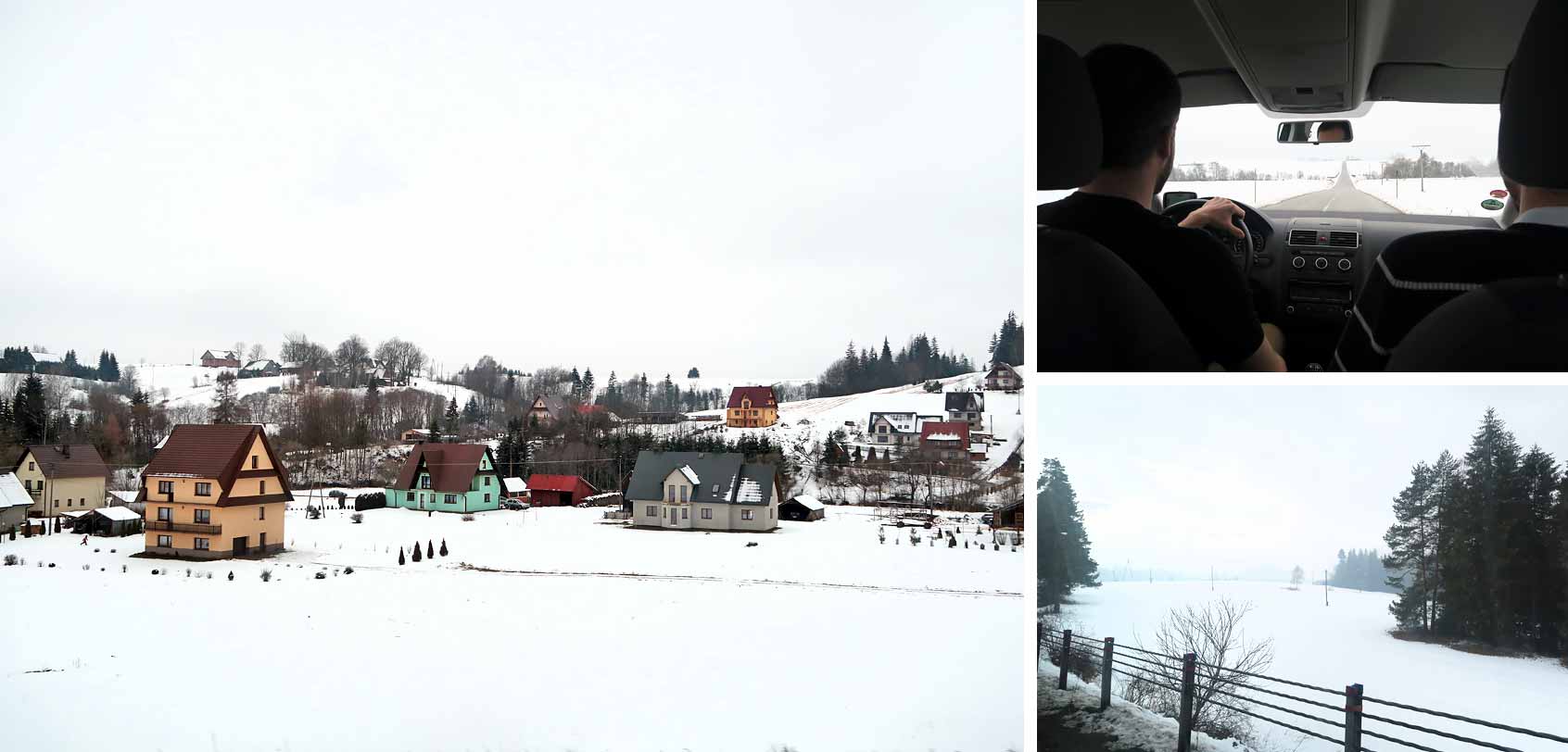
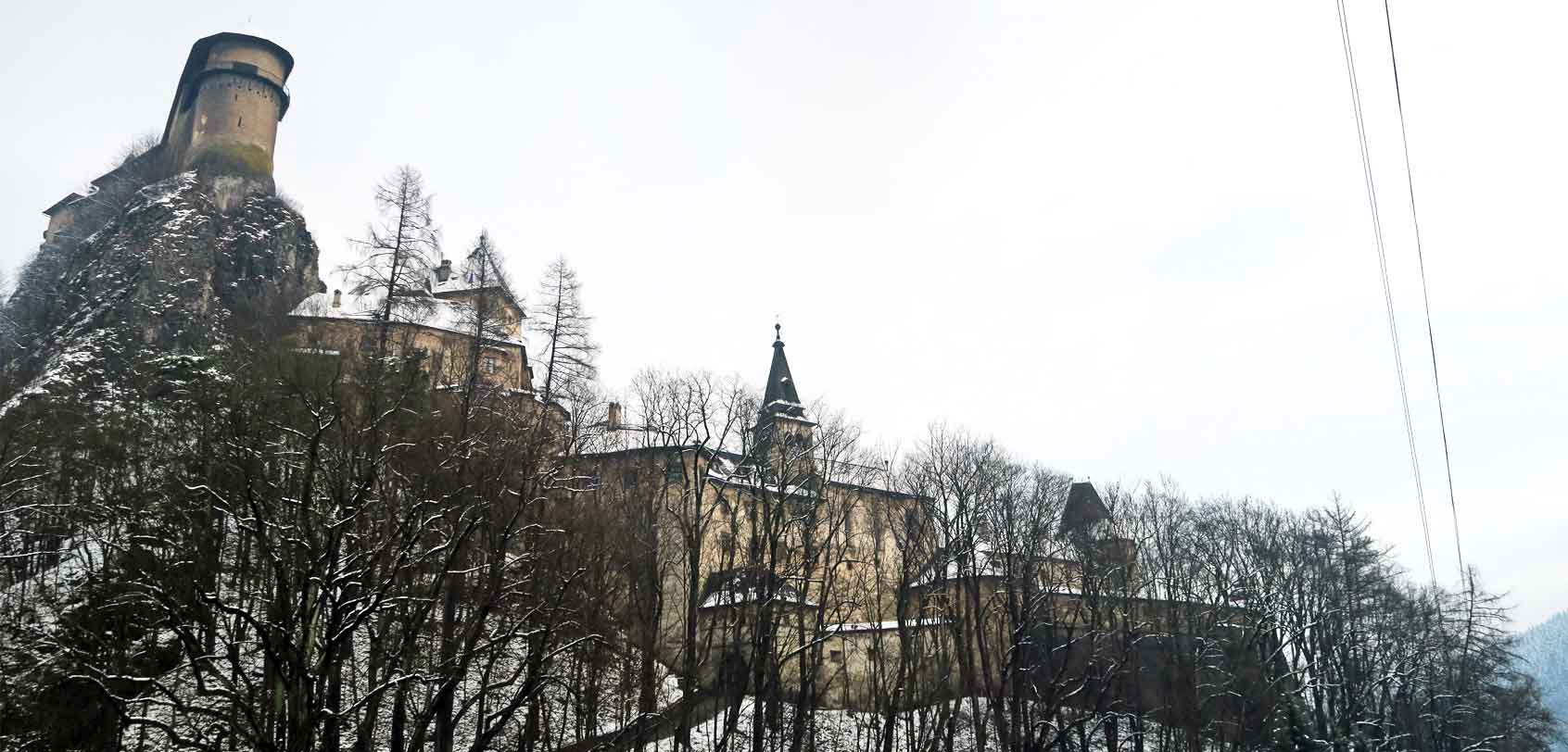
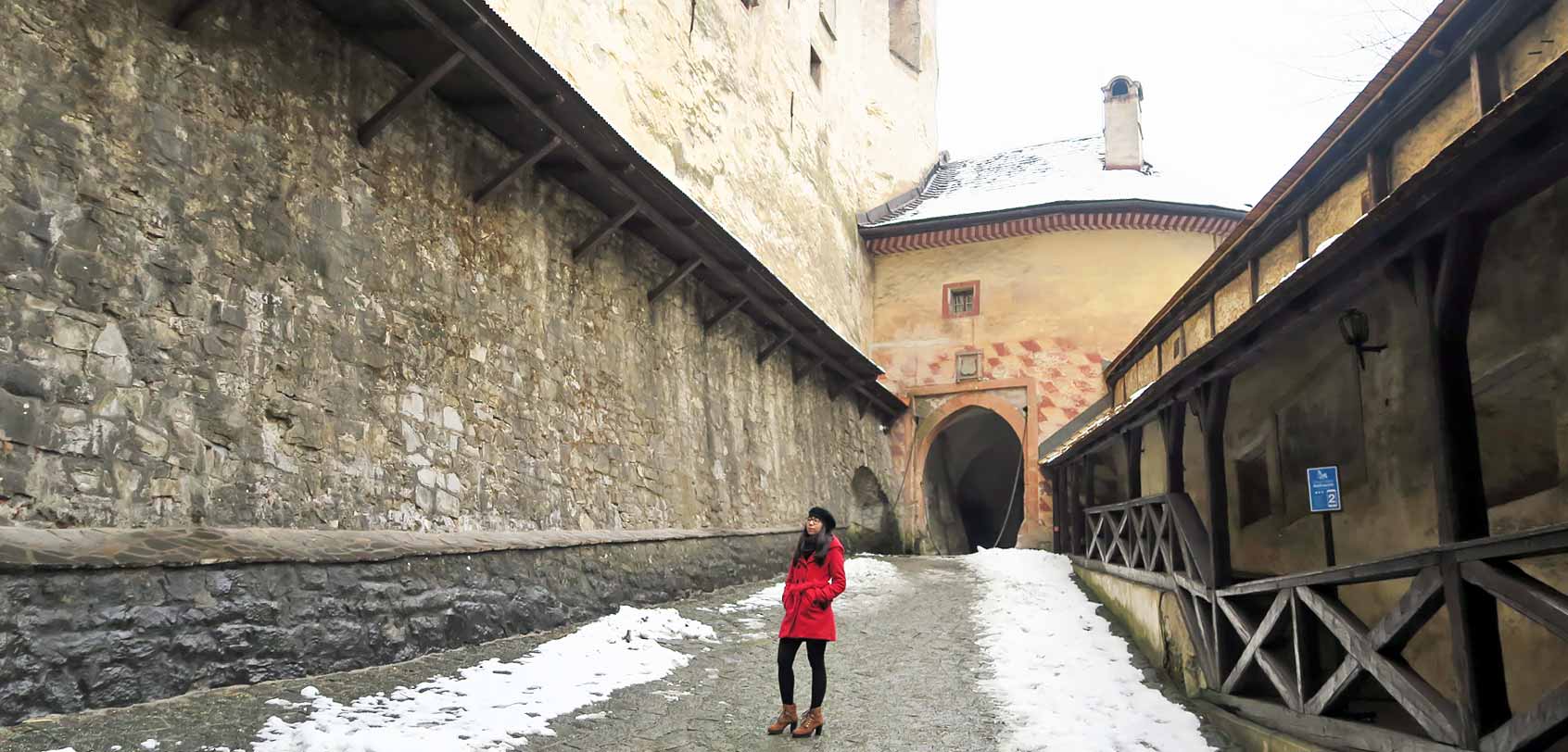
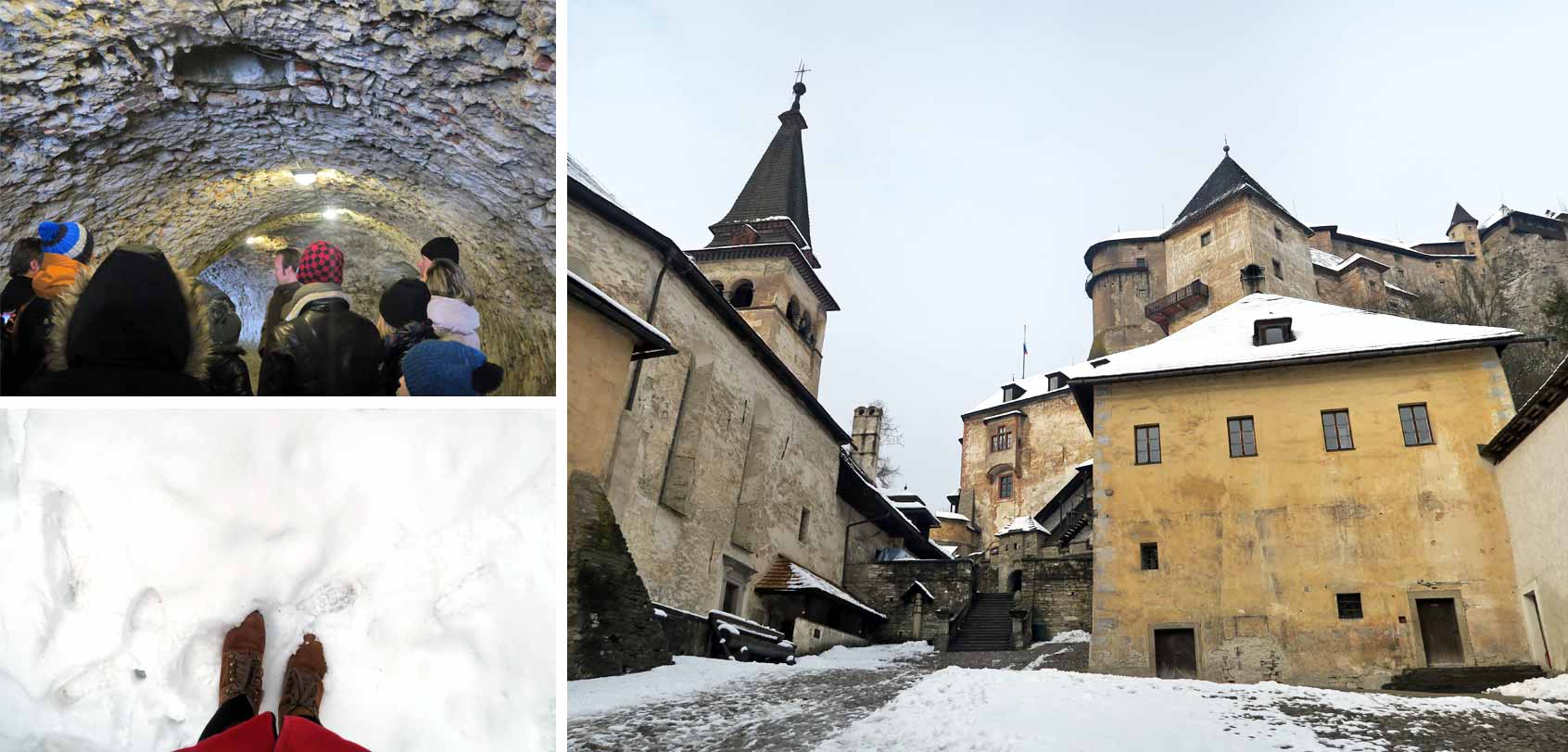
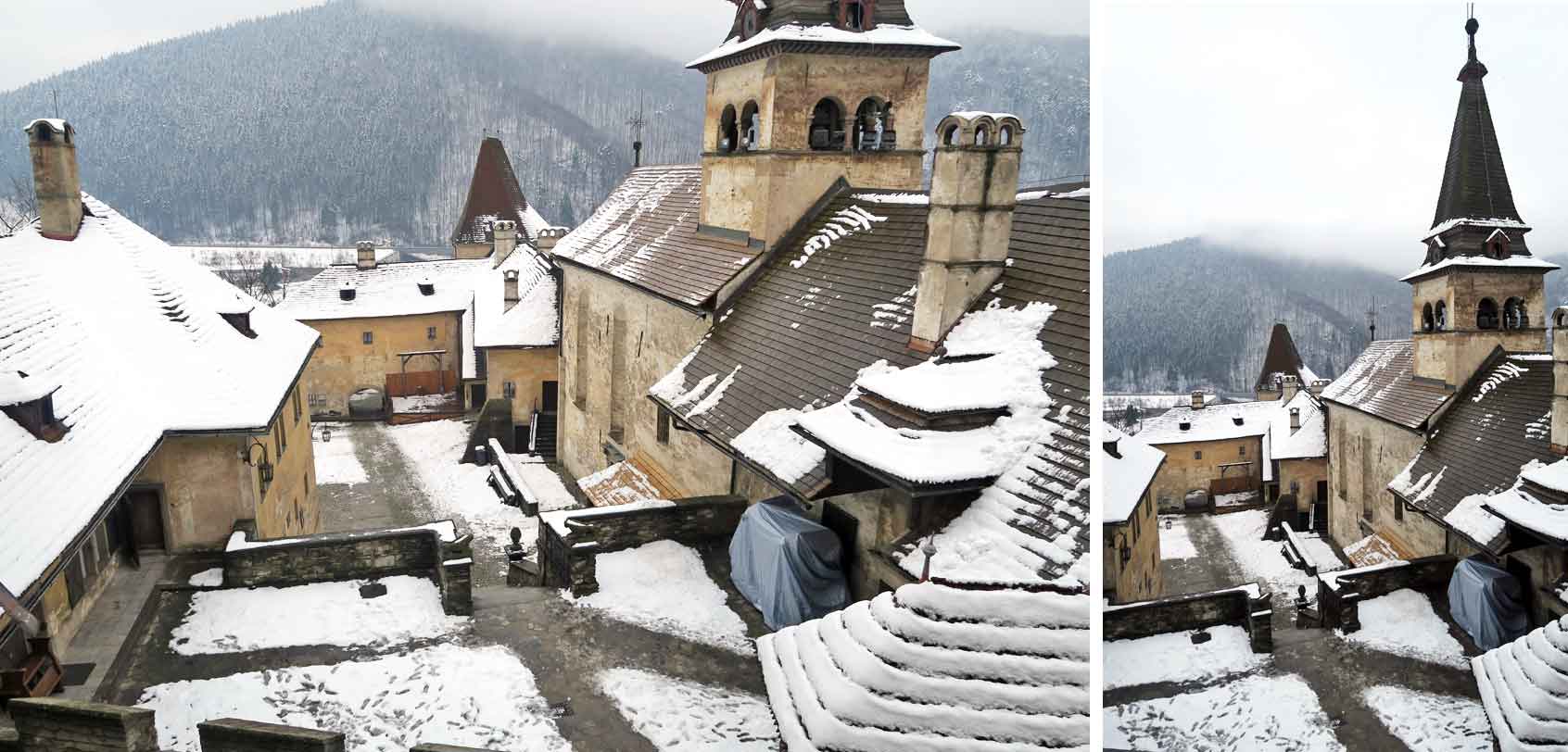

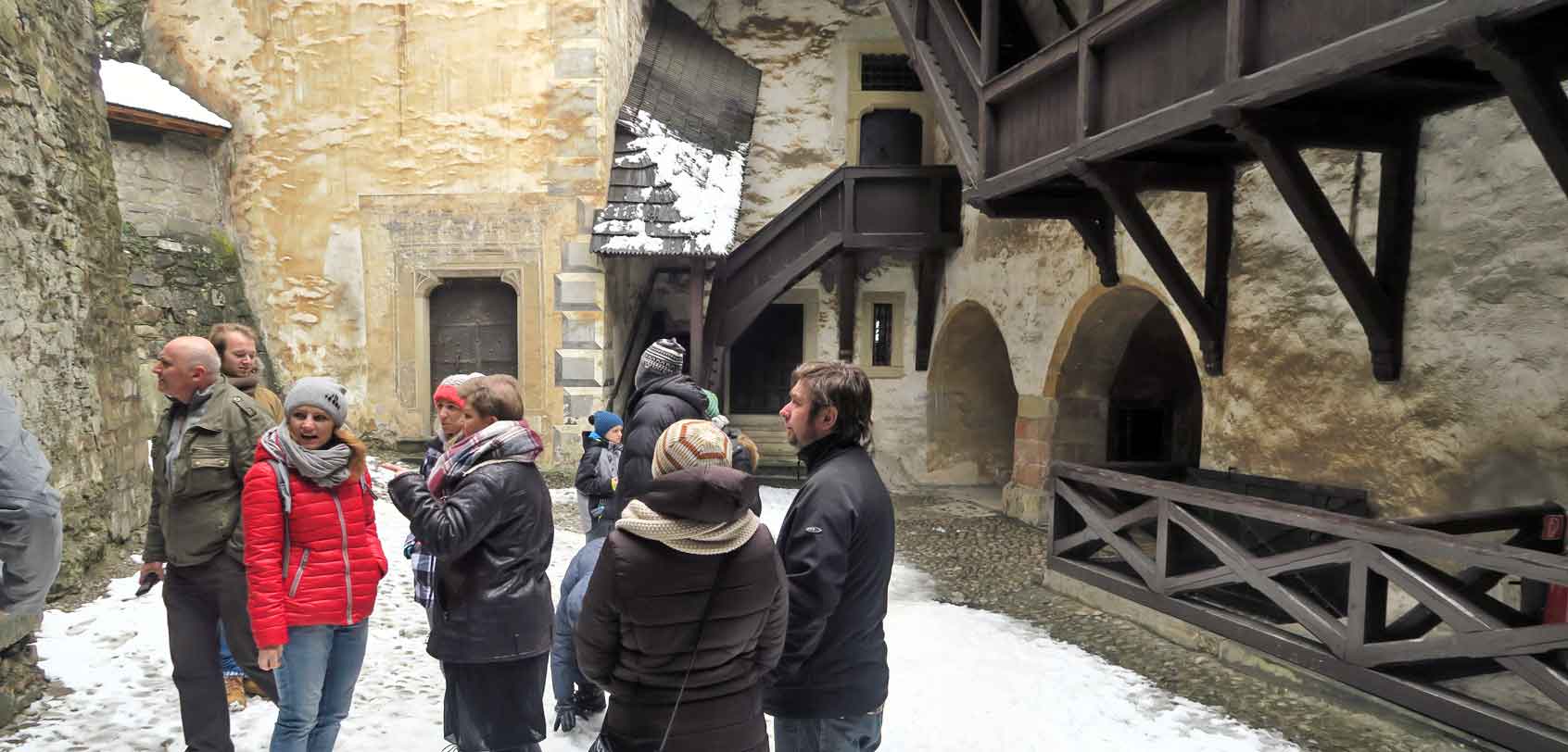
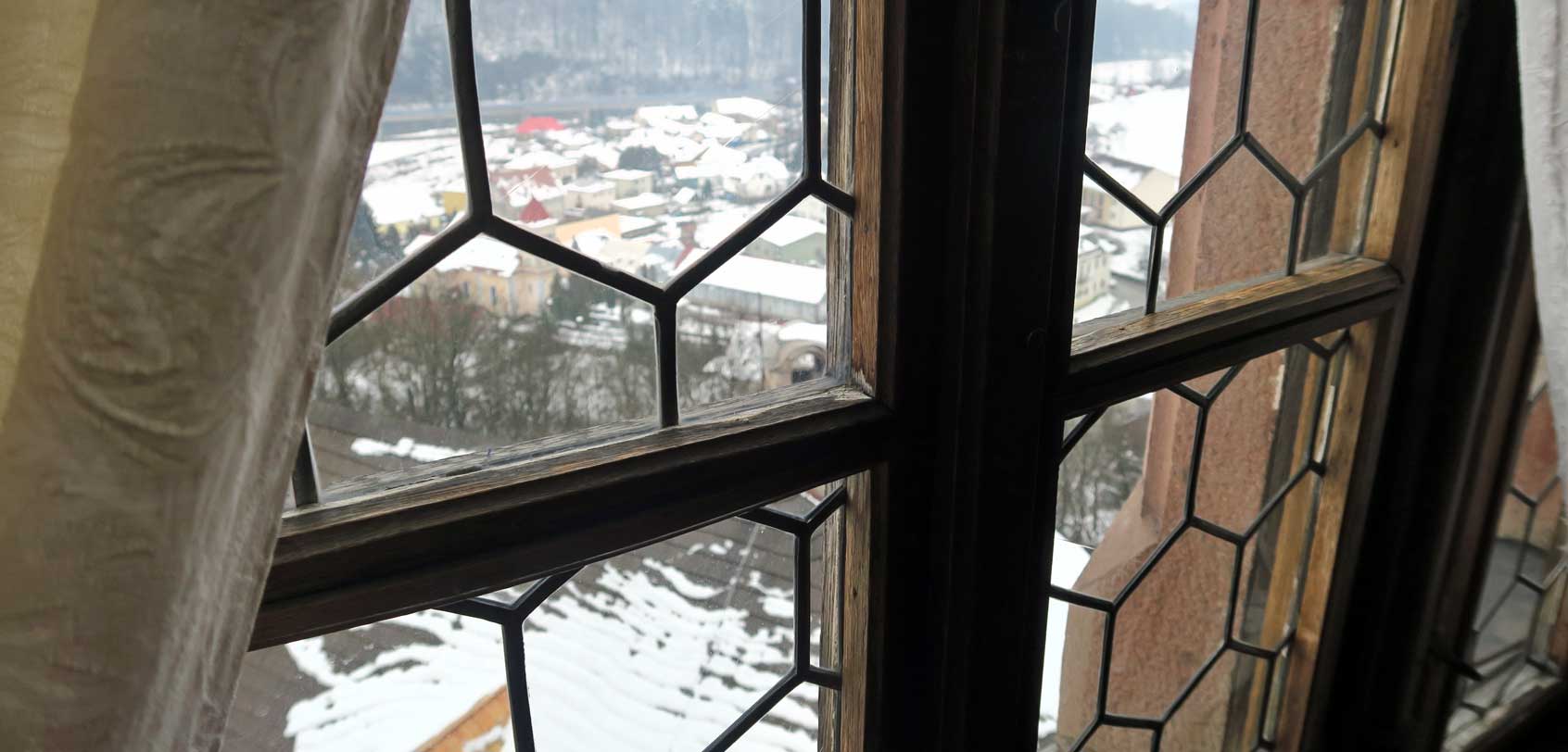
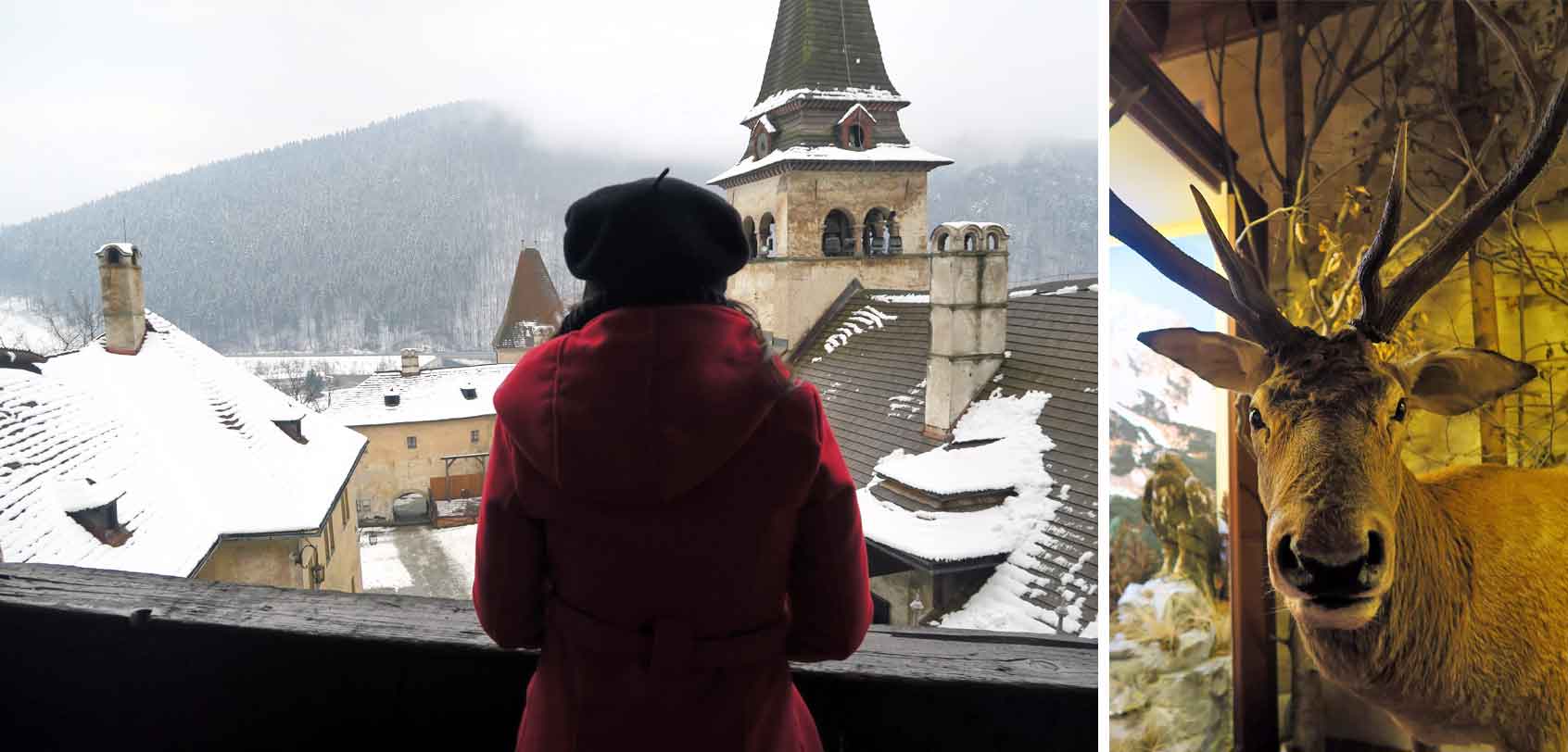
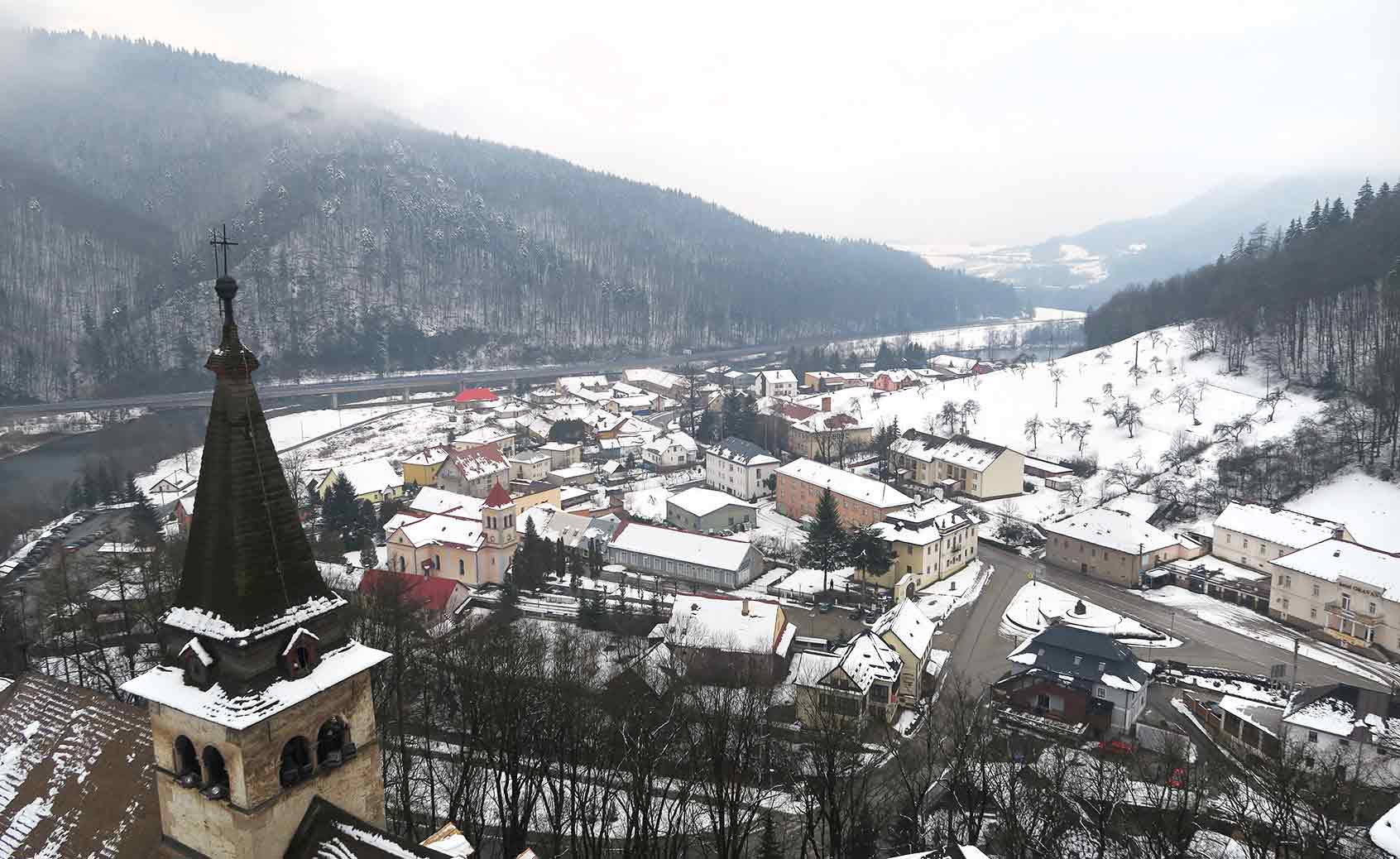
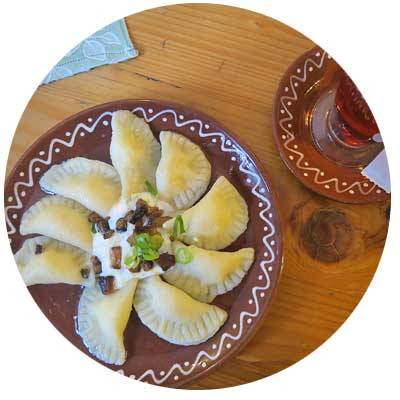
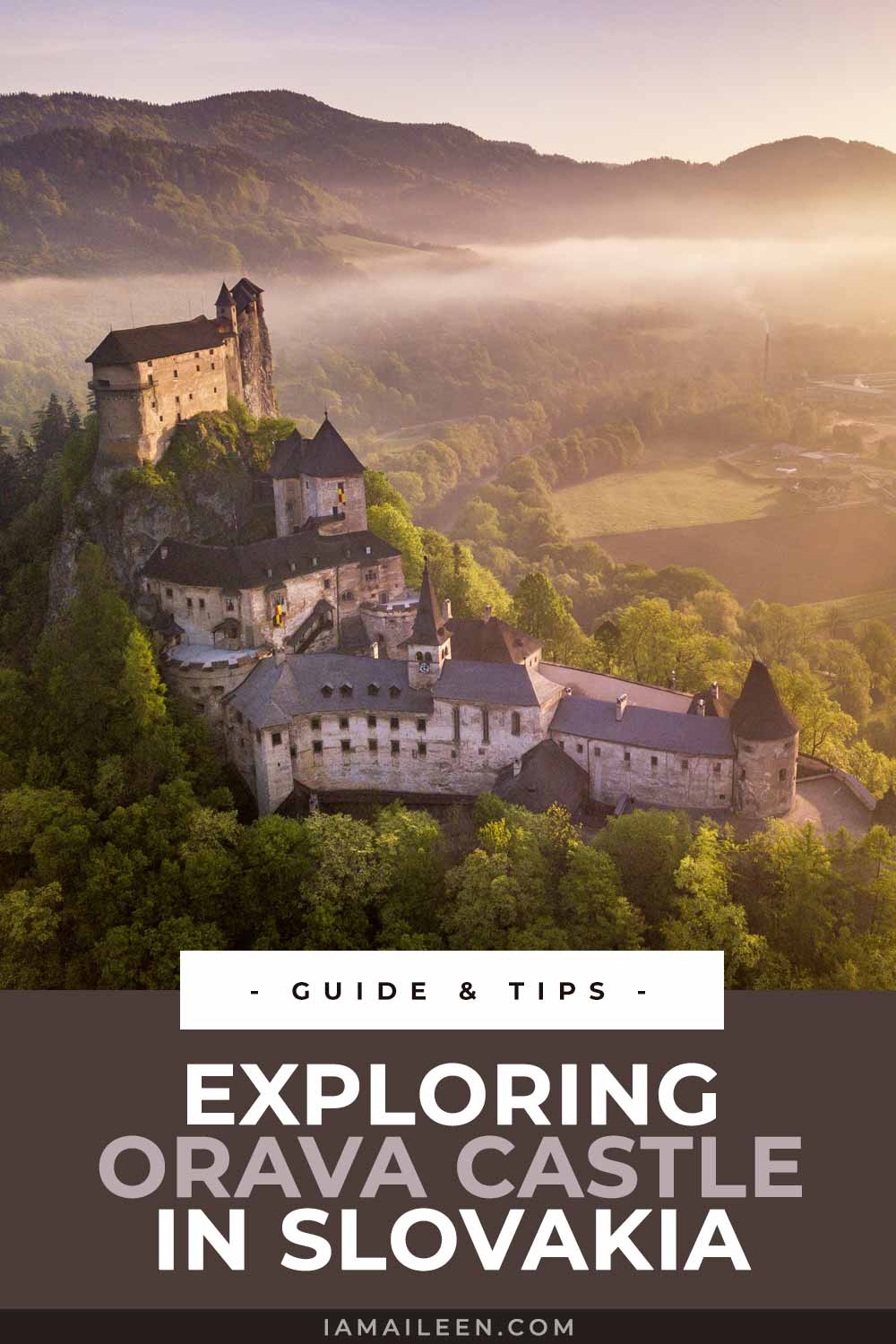


You’re speaking my language! I live in Denmark, and Krakow is one of my favorite cities for a quick, affordable holiday! I love traveling out of season, and winter sounds like a great time to visit Slovakia. Noted for next year… thanks for the info :)
Yay! I hope I got it right ;) haha. But yeah, I bet you’ll love Slovakia, Sage!
This looks like an awesome place to visit. The price doesn’t seem that bad at all compared to what I would expect to pay. If I am ever in the area, I will be checking it out.
Indeed, right? Great to hear! I bet you’ll have a great time :D
Your photos are beautiful. Slovakia in the winter is so intriguing to me! My nieces and nephew are big into the Nosferatu history; I am going to share this post with them! Thank you for including the timeline! And now I am also thinking about dumplings. ;) Those sound good!
Thanks Heather! And oooh, they are? That’s awesome! Then they’ll absolutely love discovering this castle. :D Hope you guys get to set foot here.
article is nice
Thanks, glad you like it :D
Great article. I went to Czechoslovakia in 1992, and then to the Czech Republic in 1995. I regret not heading further east after seeing this!
Thanks for posting!
Aw that’s a shame — BUT it’s never too late! You can definitely plan a new one in the near future ;)